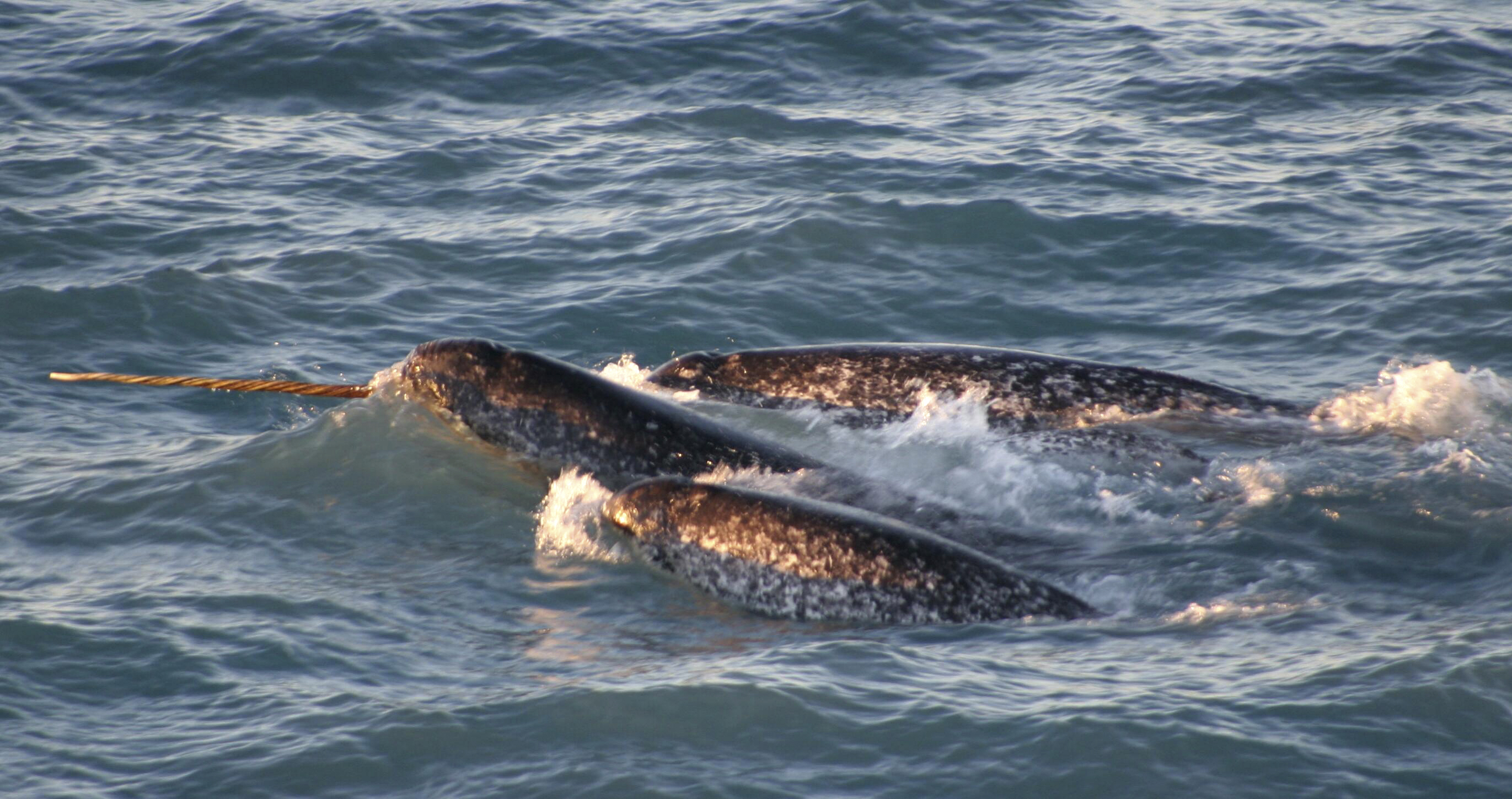Narwhals, tusked whales of the Arctic, see with sound. Really well.
The narwhal is not an aquatic unicorn. It’s not magical, or mythical. It’s just a whale with two teeth, one of which happens to be really long on males. But it’s not just its snaggletooth — which can be up to nine feet long — that makes this Arctic sea creature unbelievable. The narwhal sees with sound — and it’s exceptionally good at it too, according to a study published Wednesday in the journal PLOS One.

Like any whale, the narwhal needs to surface to breathe — on average, every four to six minutes. But unlike most whales, narwhals spend all of their lives in extreme Arctic conditions, primarily in waters off Eastern Canada and Greenland, where there’s more darkness than light, and more ice than open sea. Somehow, this blubbery bundle finds its way to cracks in the ice to breathe. Somehow, it can also hunt for squid and dive down more than a mile into pitch black water to capture fish and other prey.
“You don’t see open water for miles and miles and suddenly there’s a small crack, and you’ll see narwhals in it,” said Kristin Laidre, an ecologist at the University of Washington who led the study. “I’ve always wondered how do these animals navigate under that, and how do they find these small openings to breathe?”
[Iceland is mysteriously free of mosquitoes—for now, anyway]
Wondering how climate change and the prospect of an ice-free Arctic might affect narwhal behavior in the future, scientists tracked these whales over the ice in helicopters. Knowing that whales use echolocation — sending out clicks of sound that bounce off objects in the environment around them — they placed microphones underwater and listened.
They found that with clicks of sound, like a flashlight switching on and off, the narwhals scanned their underwater world to receive narrow snapshots and reconstructed them into a larger acoustic picture — one with more resolution than any other animal on the planet, with the possible exception of beluga whales.
The clicks, produced in organs known as phonic lips at rates of up to 1,000 clicks per second, are inaudible to the human ear, but detectable through special, underwater microphones. They exit through the narwhal’s head, which works like a glass lens, bundling the sound together and sending it out in a narrow beam that travels through the water, hitting anything in its path, said Jens Koblitz, a bioacoustician with the BioAcoustics Network in Germany who worked on the study. When echoes bounce back, the animal perceives them with fatty pads in its lower jaw.
[Here’s how much of the Arctic you’re personally responsible for melting]
Koblitz thinks the narwhal can narrow its beam like an adjustable flashlight on open ice at the sea surface or prey deep in the ocean, and then widen it as it gets closer to track its prey, a skill that has been observed in other echolocating animals like bats.

Other scientists who study whales have praised the work for managing tough conditions to reveal the importance of the narwhal’s navigation system.
“It is not like a singing humpback whale that spreads the sound widely and can be heard over long distances,” Mads Peter Heide-Jorgensen, an ecologist at the Greenland Institute of Natural Resources who was not involved in the study, wrote in an email. “Narwhals are living a secretive life in the Arctic, but this study has unveiled one of the secrets from the deep waters in the Arctic.”
Indeed, the narwhal has long evoked mystery since the Vikings brought their tusks back to Europe with stories of unicorns. But there’s one thing you should know about the tusks, Laidre said: Males and tuskless females appear to be equally good echolocators. The tusk is likely just for sexual display, like a peacock’s feathers or a lion’s mane. So it’s highly unlikely to be used as an antenna for sending and receiving.